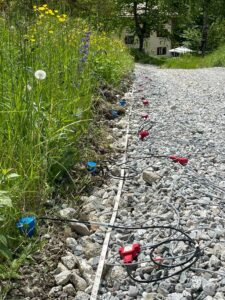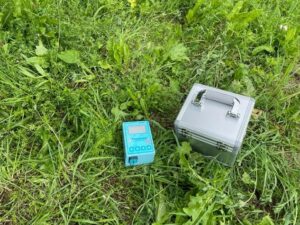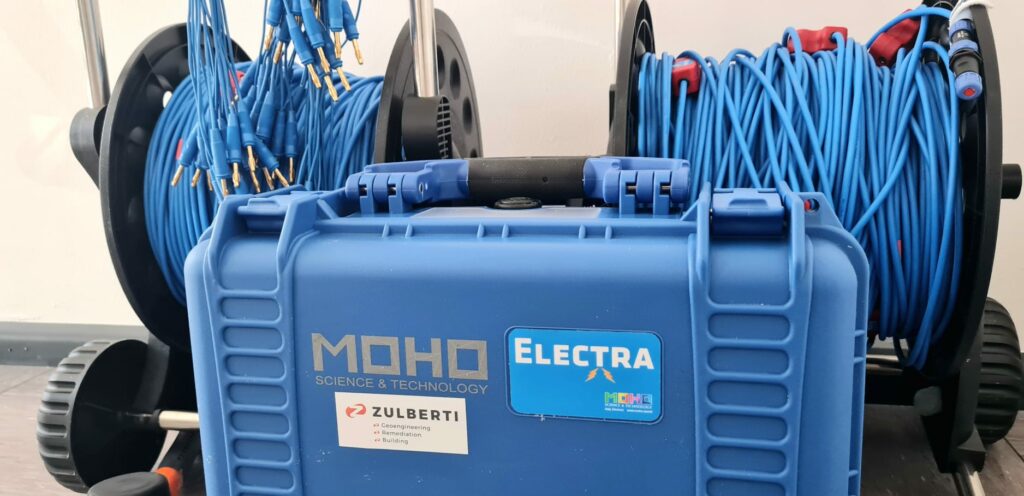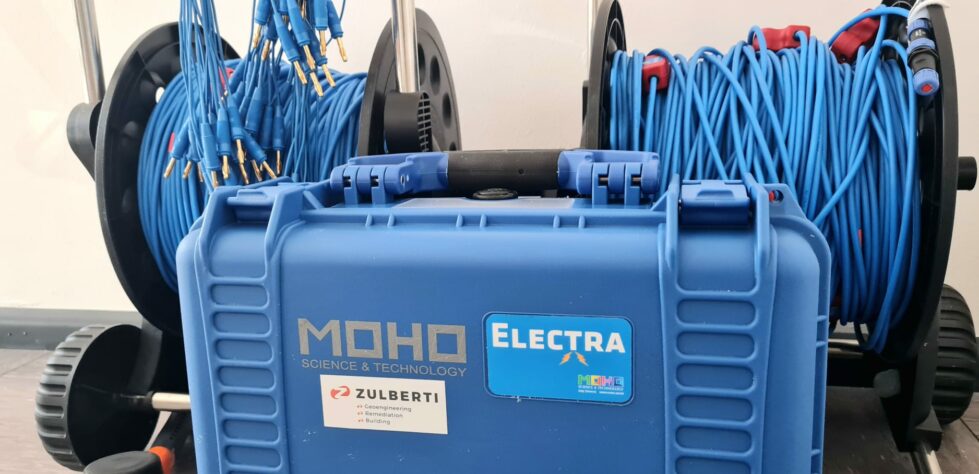
Zulberti S.r.l. has recently upgraded its equipment in order to perform geoseismic and geoelectrical survey with high-performance and cutting-edge instruments. The company effort is always aimed at ensuring even more accurate results to its customers.
These equipment, all MoHo branded, allow by the Zulberti S.r.l. team to run accurate and quality data collection through several non-invasive investigation tests such as:
- MASW tests;
- Active seismic refraction survey;
- HVSR tests;
- Geoelectrical investigations.
MASW
The MASW technique (Multichannel Analysis of Surface Waves) is a geophysical survey capable of detecting the propagation speed of surface waves in the subsoil. This is achieved through the use of extremely sensitive sensors (geophones) placed at ground level. The seismic energy utilized in this methodology is generated by an active source, such as the impact of a mallet on the ground. More than two-thirds of this energy is transmitted in the form of Rayleigh waves, which are the primary component of surface waves.
The processing of data acquired through MASW allows for the reconstruction of an estimate of the seismic stratigraphy of the subsoil. Additionally, it enables the determination of parameters such as the equivalent speed of the shear waves (Vs,eq) and the Vs30 parameter, as defined by the NTC 2018 regulation.
SEISMIC REFRACTION PROSPECTION
The aforementioned seismic equipment also facilitates seismic refraction prospecting investigations. This technique relies on measuring the travel times of refracted waves near the interfaces between subsurface seismo-layers. These waves propagate at different speeds through the layers.
Similar to MASW, seismic energy in this method originates from an energization point, such as the impact of a mallet on the ground. From this point, the energy radiates through the upper layer (direct arrivals) and laterally along deeper layers, facilitated by the phenomenon of refraction.
The seismic signal is acquired instantaneously by the geophones and MoHo modules. To extract information about the geometries and physical characteristics of the subsoil, the first arrival times data of the signal are processed using dedicated calculation software.
HVSR

The HVSR (Horizontal to Vertical Spectral Ratio) method, also known as the “Nakamura method,” is a non-invasive and relatively quick technique that involves acquiring background seismic noise. This test utilizes a single, compact measuring station consisting of three oriented geophones (tromometer) placed on the ground surface. These geophones capture environmental vibrations in three orthogonal space directions (North-South, East-West, and vertical oscillation) within a frequency range of 0.1 to 512 Hz.
By analyzing the amplitude ratio between the horizontal and vertical motion components, valuable information can be obtained, including the characteristic resonance frequency of the site, fundamental resonance frequency of a building, average shear wave velocity (Vs), and subsoil stratigraphy.
GEOELECTRIC PROSPECTION
The equipment used in the field data acquisition phase for geo-electrical prospecting is a multi-channel digital resistivimeter configured with 32 channels. This instrument boasts high resolution and accuracy in geoelectrical investigation. It allows for Multielectrode Electrical Tomography, Vertical Electrical Survey (V.E.S.), and Horizontal Electrical Survey (H.E.S.) through multiple electrode configurations.
The principle of geoelectrical investigation involves testing the behavior of subsoil material volumes when subjected to electric current passage introduced into the ground. A known electric current flow is introduced through two electrodes known as “current electrodes,” while two other electrodes called “potential electrodes” detect the difference in electrical potential generated.
Geoelectrical data are acquired through serial measurements carried out automatically by the MoHo resistivimeter, which moves the quadrupoles along the electrode array placed on-site.

Condividi questo Articolo



